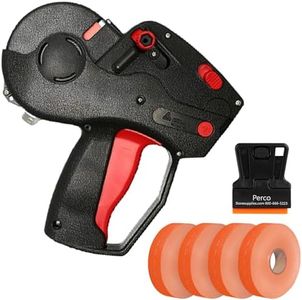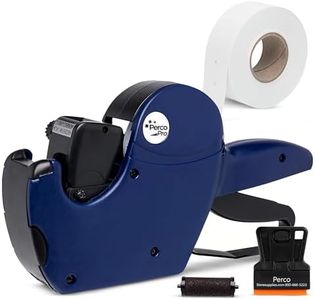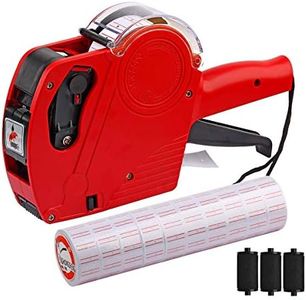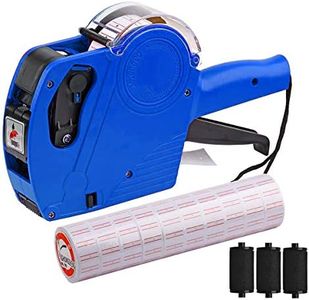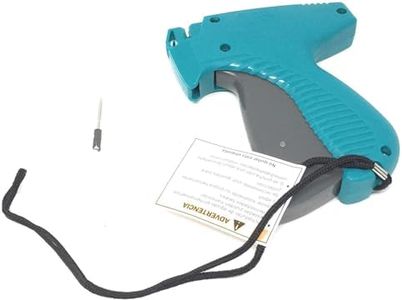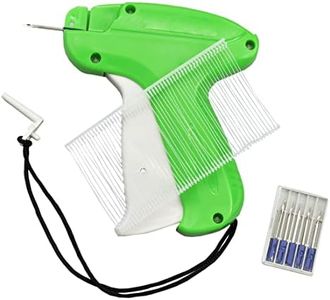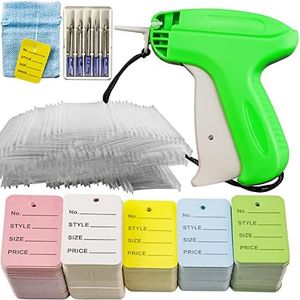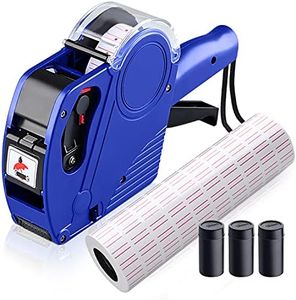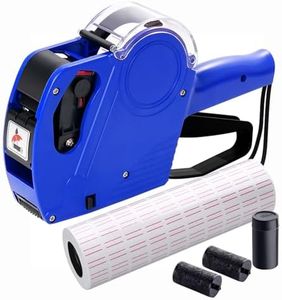We Use CookiesWe use cookies to enhance the security, performance,
functionality and for analytical and promotional activities. By continuing to browse this site you
are agreeing to our privacy policy
10 Best Price Tag Guns
From leading brands and best sellers available on the web.Buying Guide for the Best Price Tag Guns
Choosing the right price tag gun is important for efficiently labeling products in shops, warehouses, or even for personal sales. The right tool makes your work quicker and reduces hand fatigue. When selecting a price tag gun, look at the main features that affect usability, compatibility, and maintenance. Understanding these specs helps you find a gun that matches your tagging needs and ensures you won’t be constantly struggling with jams, incompatible tags, or uncomfortable grips.Tagging Mechanism TypeThe tagging mechanism refers to how the gun inserts the tag. There are generally two main types: standard (regular) and fine. Standard tagging guns use thicker needles and are best for tagging firm or thick materials like denim or shoes, while fine tagging guns use thinner needles and are more suitable for delicate fabrics to minimize damage. Think about what kind of items you’ll be tagging: if it’s mostly delicate clothing, a fine gun may be the best; for tougher items, a standard one is preferred.
Needle SizeNeedle size affects how easily and safely you can attach tags without damaging products. Larger needles are stronger, making them better for thick or tough materials, while smaller or fine needles are gentler on light fabrics. If your goods are a mix, consider a gun with easily changeable needles. Be sure to match needle size to the material’s thickness and fragility; using too thick a needle on thin fabric can leave holes, but too fine on thick products may not penetrate properly.
Tag CompatibilityThis specification tells you what kind of tag fasteners (barbs or attachments) the gun can accept. They come in different lengths and thicknesses. Some guns are compatible only with certain sizes or types. Make sure the gun you pick works with tags that suit your products. If you need longer barbs for bulker items or smaller ones for subtle tagging, check the compatibility carefully—it saves you hassle when reordering supplies.
Loading MechanismThe loading mechanism refers to how you insert new barbs or tags into the gun. Some are loaded from the top, others from the side or back. An easy-to-use mechanism means less downtime and reduced frustration, especially if you need to label lots of products quickly. If you want convenience and speed, seek a system that allows for quick refills; if you only tag occasionally, this may not be as crucial.
Ergonomics and WeightErgonomics describe how comfortable the gun is to hold and use, especially over extended periods. Lighter, well-balanced guns with comfortable grips are best for those doing a lot of tagging to reduce hand fatigue. Try to choose a gun that feels right in your hand—if it’s too heavy or not shaped well, it can slow you down and even lead to hand pain.
Durability & Build QualityDurability relates to how well the gun stands up to frequent use and accidental drops. Higher build quality materials like reinforced plastic or metal parts increase the tool’s lifespan. If you’ll be using it often or in a busy shop, a sturdy build is important to avoid breakdowns. For occasional home use, this may not be as vital.
Maintenance & Needle ReplacementMaintenance covers how easy it is to clean or fix common issues like jams, and how straightforward it is to replace the needle. Some guns have a simple snap-out system, while others require more work. If you want less hassle and downtime, opt for a model that makes these tasks easy to perform. Regular users should pay more attention to ease of maintenance.
